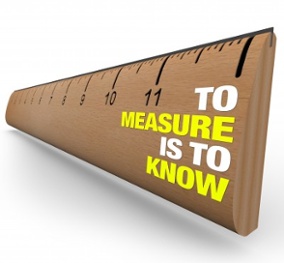Are Your Programs and Events in Need of a Measuring Stick?
It is key to measure the success of a course or program;
“Accountability.”
It’s one of the least sexy buzzwords still making the rounds of event and training trend forecasts. It seems too obvious to be viewed as anything new or game-changing, yet some of the experts cite it as one of the trends ready to rock the event and training sectors.
Why? Because each year, hundreds of billions of dollars change hands in the event and training industry, and today we have the technology in place to better determine  whether we are getting value from either side of the transaction.
whether we are getting value from either side of the transaction.
In event and training circles, accountability comes in several forms. There’s basic return on investment (ROI) type accountability, whereby the cost of staging the event or training is reconciled against the proceeds from registration fees, exhibitors, sponsorships, etc. There’s a secondary ROI that measures the impact of the event or training on participants, be it through evaluations that examine their satisfaction or testing that assesses their grasp of the content presented.
For organizations that receive government funding, accountability might relate to completing a certain number of trainings or reaching a minimum number of participants in an event. A childcare resource center, for instance, might need to keep providers under its umbrella up to date on certification requirements. A continuing education program might need to tabulate the number of CEUs awarded.
The bottom line: administrators of events and training programs – now more so than ever – are tasked with delivering data that in one form or another measures some aspect of their offerings (and a similar move is afoot for participants). For some, this growing accountability requirement can pose an unworkable challenge to their current registration and reporting process.
Thankfully, there are solutions available on the market. One of the advantages of a complete class registration system, for instance, is tools that allow administrators to survey participants, monitor the budget for their events and programs, and track and record participation, CEUs, certifications and much more.
As an example, a customer using full-featured registration software for their conference can plug in expenses (venue, catering, audio-visual, etc.) and export a report at any time showing how costs compare with current revenues accrued as registrants, exhibitors and sponsors’ payments are processed. With some software, the customer can even export the data in chart and graph form and compare the most recent event’s revenues, attendees or other data points to prior years’ results.
Similarly, records can be exported and sent to participants’ organizations, regulatory bodies and others to verify attendance, course completion, etc. A practicing dentist, for instance, is typically required to accrue a certain number of continuing education credit hours over a specific time cycle. A training provider with a complete registration solution can pull that individual’s information in an instant.
In the broader education industry, a district or school might want to know how many of its teachers attended professional development workshops in 2013, and from what departments. Or, who signed up but didn’t show up? Or, who hasn’t met their CEU requirements? With the right system, that information is a click away.
A good system’s evaluation tools can also be used to survey participants about all facets of an event or training, test their understanding of the subject matter and get feedback on how to improve the offering. Again, that data can be compared over like events or trainings to identify trends.
If you would like to know more about the growing importance of accountability in events and training and how to track it – or just want some additional information about Learning Stream and registration software – please contact us.
